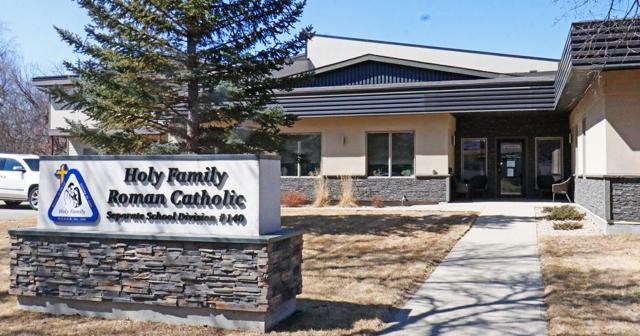WEYBURN – A number of Saskatchewan’s school divisions say they will need to draw on reserves to balance their budgets, after the province brought down their budget on Wednesday in the Legislature.
The funding for K-12 education was increased by 2.5 per cent, but as local school board representatives pointed out, this does not cover the rising costs from inflation and other causes, such as the level of enrolments.
“Even though the government talks about a 2.5 per cent increase, we had a bit of a decrease in enrolment. We come about even or a little lower than last year,” said Gwen Keith, education director for the Holy Family Roman Catholic Separate School Division.
She added they will be dealing with challenges posed by increase costs, such as in utilities and maintenance, and noted these costs “are clearly not covered. There was not any mention of the new 10-year plan. … We need to take what the government has given us in funding, look at the increased costs and see where we’re at based on that. It’s pretty well status quo funding, but costs are going up, so we have to balance that off and figure out the final budget in the spring.”
She added that Holy Family is “certainly appreciative” of the funding they are getting, “but it’s just not enough to maintain the status quo we need.”
The picture is similar for the larger Southeast Cornerstone School Division, as education director Keith Keating noted they will also get an insufficient level of funding.
“While it’s early yet, and our accounting department is still working on the implications of budget for SECPSD, it appears at first run through that there will be a significant operating shortfall based on the funding distribution to the division and the inflationary pressures being faced,” said Keating. “We will have a more complete understanding of the details as we work through our budgeting process.”
He noted that the Ministry of Education has approved their request for a new school in Carlyle, and funds for planning were provided in this budget.
“We are grateful that Carlyle was announced for budget to start the planning process for a new school that will incorporate Gordon F. Kells and Carlyle Elementary School into a new Pre-k to 12 school. SECPSD looks forward to working with the school, School Community Councils, and community as we work to provide the best opportunities possible for students in Carlyle,” said Keating.
Education minister and Weyburn-Big Muddy MLA Dustin Duncan pointed out there are factors not being considered, such as the new Saskatchewan Distance Learning Corporation, which will be operated by the ministry at the provincial level, plus funding for the capacity-building mental health program that is at the Weyburn Comp School, and the funding for Education Assistants is being annualized rather than the one-time funding when it was introduced a year ago.
With some of the funding tied to enrolment, some school divisions will see an increase and others will see a decrease as a result, noted Duncan.
“What isn’t in that budget increase is we haven’t set the money for the teachers’ contract, because it’s still in place until August, so we don’t know what will be needed for that. We’ll start negotiating around May,” said the minister, noting once a contract is in place, they can then go to the Treasury Board and tell them what is needed to cover the new contract.
With the Distance Learning Corporation, Duncan noted that a division like Cornerstone will no longer have the expense to run the Cyber Stone online school, as the staff will be hired by the province and paid by them.
Duncan estimated that this will save school divisions about $13 million collectively. He acknowledges there will still be some costs to the local school boards, as they want the students to still be connected to a local school for such things as driver training or other locally-offered courses.
In regard to the new 10-year education plan, Duncan said mental health and well-being has been brought up by school divisions as a concern, as they feel they have been handling this alone.
The Ministry of Health will be taking on some of this responsibility, such as with the capacity-building program that is in place at the Weyburn Comp. In addition, he noted there are currently 31 walk-in mental health clinics across the province for adults, and 11 or 12 of these will begin to offer youth services as well.
“We don’t expect education to do it along. These will go to what school divisions have been asking for through the education plan. This is going to have a positive impact for students across the province,” said Duncan.
The Saskatchewan Teachers’ Federation was very critical of the budget shortfall, and said in a statement, “This does not keep pace with rising costs and will result in further cuts to services and supports that children need. A minimum of five per cent was required to maintain last year’s funding levels. This comes at a time when the public school system is already struggling to manage the impact of chronic underfunding, record-high enrolment and rising costs.”






